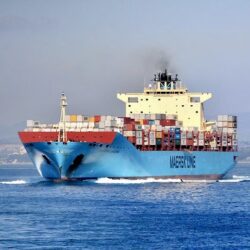Maersk rides the wave of the pandemic

The coronavirus pandemic seems to have been far from detrimental to Maersk, the world’s largest container shipping company, over the past year. In the fourth quarter of 2020, the Danish company’s gross operating profit (EBITDA) increased by a whopping 96% to US$2.2 billion, thanks to a combination of explosive rises in transportation prices and a fall in fuel prices. Over the whole of 2020, the firm’s gross operating profit grew by more than 47% to US$6.6 billion. However, there is also a downside to this success.
The recent upswing in container shipping comes after years of losses, and shipping companies were initially forced to reduce capacity and cancel sailings due to the slump in demand for container shipping during the 2020 lockdown period. As a result, however, shipping prices remained surprisingly stable and then they skyrocketed when demand picked up again.
For example, the price on the spot market to transport a container from China to Europe rose from US$2,000 to US$10,000 and there were peaks at even higher amounts, according to reports in the Dutch financial newspaper Het Financieele Dagblad. The lockdowns also created shortages of empty containers in various parts of the world, which drove prices up even further. However, the average increase in the transport price remained lower because much of Maersk’s work is based on long-term contracts.
DHL and DSV bypass major shipping companies
Incidentally, the developments in the container market attracted criticism from shippers and forwarders due to the price hikes and the reduced reliability of the sailing schedules. At the end of last year for example, in a new all-time low, only half of the ships arrived at the port on time. There were also growing concerns about the dominance of the leading shipping companies.
As a result, parcel delivery company DHL and the Danish third-party logistics provider DSV decided to take matters into their own hands and charter smaller ships that would not normally be used for container shipping. This is reportedly the first time in history that customers are bypassing major shipping companies to arrange their own container transport on the key routes between China, Europe and the USA.










